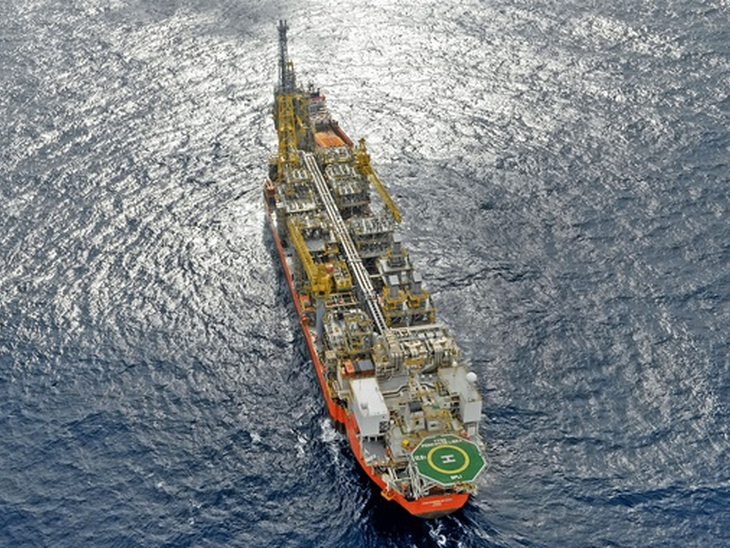
T&B Petroleum/Press Office ANP

National production in November was 3,550 MMboe / d (million barrels of oil equivalent per day), of which 2,755 MMbbl / d (million barrels per day) of oil and 126 MMm3 / d (million m3 per day) of gas Natural. Oil production decreased 4.1% compared to the previous month and 10.9% compared to November 2019. In natural gas, the drop was 2.8% in relation to October and 7.5% in the compared to the same month of the previous year.
A redução na produção total de petróleo e gás em novembro foi motivada, principalmente, por paradas programadas e/ou causadas por necessidades operacionais de plataformas localizadas nos campos de Búzios, Tupi (localizados na Bacia de Santos, no polígono do Pré-sal), Albacora (Bacia de Campos) e Atlanta (Bacia de Santos).
The positive highlight of November was well 9-ATP-1-RJS in the Atapu field, in the Santos Basin, which jumped from tenth to second in the ranking of wells with the highest productivity, reaching an average production volume of 57,258 boe / d (barrels of oil equivalent per day) and second only to well 7-BUZ-10-RJS, in the Búzios field, also in the Santos Basin, which produced 65,228 boe / d. Well 9-ATP-1-RJS produces in a shared deposit comprising the fields of Atapu, West of Atapu and a non-contracted portion of the Union, which had its first oil extracted in June 2020 with the P-70.
The information is from the ANP's Monthly Bulletin on Oil and Natural Gas Production, which provides detailed data on national production for November 2020 and is available at https://www.gov.br/anp/pt-br/centrais- de-content / publications / bulletins-anp / monthly-bulletin-of-oil-production-and-natural-gas.
Pre-salt
Pre-salt production in November was 2,422 MMboe / d, of which 1,920 MMbbl / d of oil and 79,808 MMm3 / d of natural gas. In total, there was a reduction of 4.4% in relation to the previous month and 6.4% in relation to November 2019. Production in the Pre-salt originated in 116 wells and corresponded to 68.3% of the national production.
Use of natural gas
In November, the use of natural gas was 97.5%. 54.7 MMm³ / day were made available to the market. Gas flaring in the month was 3.1 MMm³ / d, an increase of 3.7% compared to the previous month and a reduction of 8.6% compared to the same month in 2019.
Origin of production
In November, offshore fields produced 96.8% of oil and 81.4% of natural gas. The fields operated by Petrobras were responsible for 92.7% of the oil and natural gas produced in Brazil. However, fields with Petrobras' exclusive participation produced 41.0% of the total.
Highlights
In November, the Tupi field, in the Santos Basin pre-salt, was the largest producer of oil and natural gas, registering 849 MMbbl / d of oil and 37.4 MMm3 / d of natural gas.
The Petrobras 75 platform, producing in the Búzios field through four interconnected wells, produced 153.220 Mbbl / d of oil and was the facility with the highest oil production.
The Polo Arara installation, producing in the Arara field, using 32 wells connected to it, produced 6.630 MMm³ / d and was the installation with the highest production of natural gas.
Estreito, in the Potiguar Basin, had the largest number of onshore producing wells: 1,041.
Tupi, in the Santos Basin, was the maritime field with the largest number of producing wells: 57.
Marginal accumulation fields
These fields produced 590.6 boe / d, 117.2 bbl / d of oil and 75.3 Mm³ / d of natural gas. The Iraí field, operated by Petroborn, was the largest producer, with 468.3 boe / d.
Other information
In November 2020, 263 areas granted, three areas for consideration and five sharing, operated by 38 companies, were responsible for national production. Of these, 60 are maritime and 211 onshore, with 11 relating to contracts for areas containing marginal accumulations. Production took place in 6,511 wells, of which 480 were seafarers and 6,031 onshore.
This month, 34 fields remained with their respective production temporarily interrupted due to the effects of the Covid-19 pandemic, being 17 seafarers and 17 onshore, and a total of 60 maritime installations remained with production interrupted. There was no change from the previous month.
The average API grade of oil extracted in Brazil was 28, with 2.7% of the production considered light oil (> = 31 ° API), 90.4% average oil (> = 22 API and <31 API) and 6, 9% heavy oil (<22 API).
As bacias maduras terrestres (campos/testes de longa duração das bacias do Espírito Santo, Potiguar, Recôncavo, Sergipe e Alagoas) produziram 91,2 Mboe/d, sendo 73,9 mil bbl/d de petróleo e 2,7 MMm³/d de gás natural. Desse total, 74,1 mil boe/d foram produzidos pela Petrobras e 17,1 mil boe/d foram produzidos por concessões não operadas pela Petrobras, dos quais: 11.460 boe/d no Rio Grande do Norte, 4.996 boe/d na Bahia, 276 boe/d em Alagoas, 187 boe/d em Sergipe e 181 boe/d no Espírito Santo.

Contact us